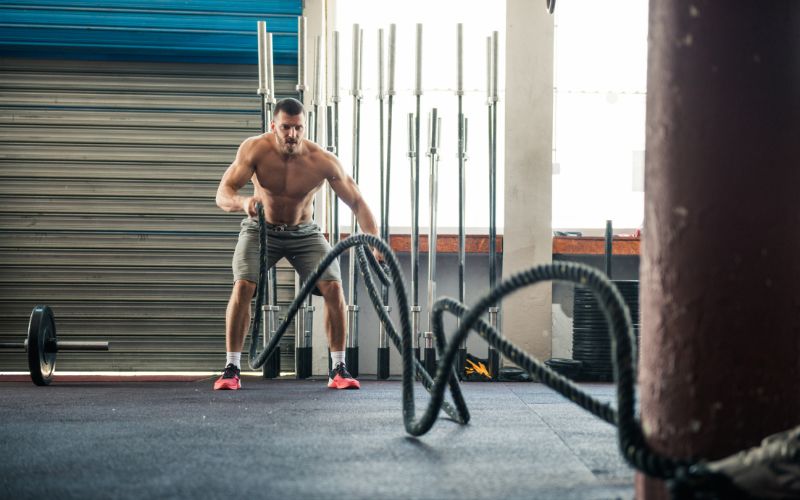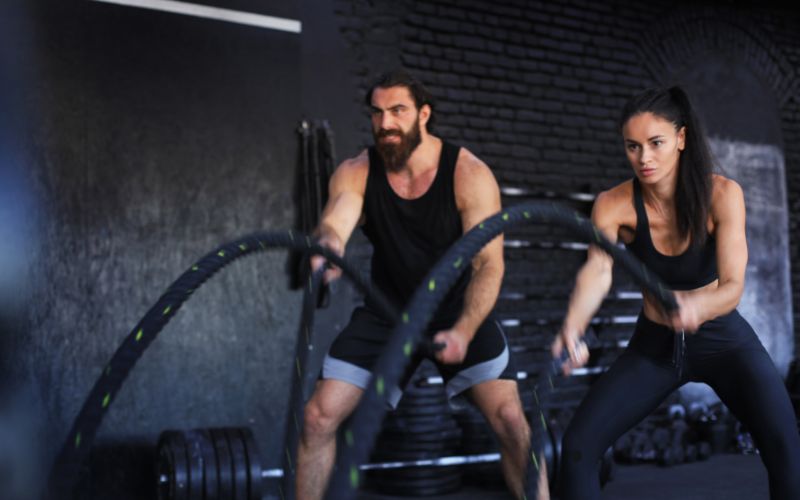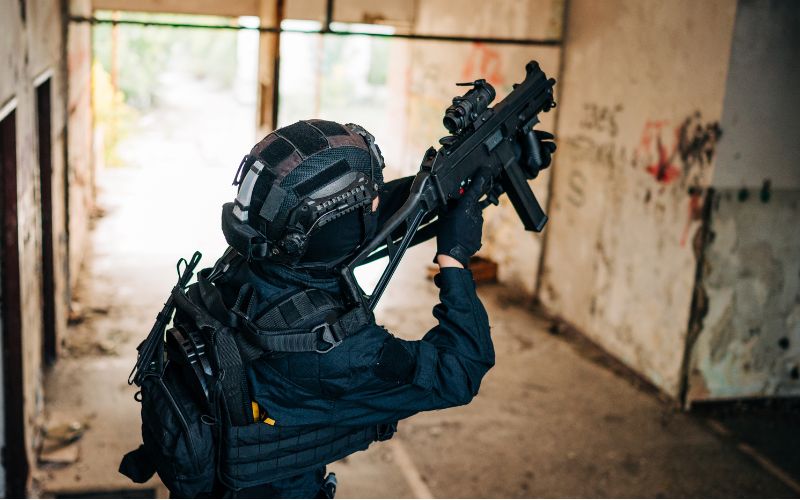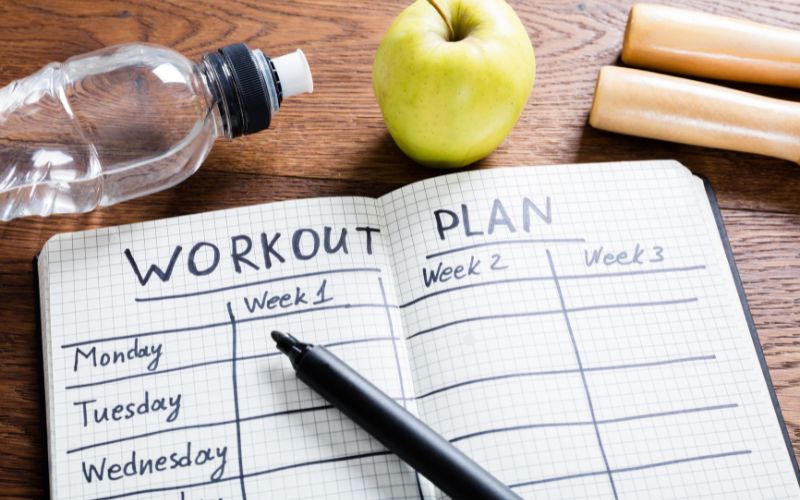The Best Workouts For Tactical Strength And Endurance

In a world where physical performance can mean the difference between success and failure, tactical athletes—those in the military, law enforcement, and other high-demand professions—need more than just a traditional workout routine. They require a fitness regimen that builds tactical strength and endurance, essential for handling the unique challenges of their roles. Whether you’re preparing for selection, aiming to pass a grueling physical test, or want to condition your body to be combat-ready, the right workout plan is crucial.
This blog will explore the best workouts for developing tactical strength and endurance and provide an in-depth guide to help you achieve peak performance.
How To Build Strength Through Community?
One of the strongest strategies of tactical training is the team mindset. Whether training with group members or virtual group members, having a community with a common objective aids accountability, motivation, and performance.
Numerous training programs offer online membership options with group support, progress monitoring, and access to expert knowledge. Seek options that fit your goal, experience, and the amount of time you’re willing to commit.
Tactical Strength And Endurance

Before diving into the workouts, it’s essential to understand what tactical strength and endurance entail. Tactical strength isn’t just about lifting heavy weights; it’s about building functional strength that translates directly to real-world tasks—carrying heavy loads over long distances, scaling walls, or performing repetitive actions under stress. Similarly, tactical endurance goes beyond running a marathon; it’s about sustaining high-intensity efforts over extended periods, often with limited rest, in unpredictable conditions.
The Importance Of Functional Fitness

Functional fitness is the cornerstone of any tactical training regimen. Unlike traditional bodybuilding, which focuses on muscle size and aesthetics, functional fitness aims to enhance the body’s ability to perform everyday tasks. This is particularly vital for tactical athletes, as they must be ready to face physical challenges that mimic their operational environment. Workouts should target multiple muscle groups and energy systems, improving overall strength, agility, and endurance.
Core Components Of Tactical Training

When designing a workout program for law enforcement officers, there are several key components to consider:
1. Strength Training
Strength is the foundation of any tactical athlete’s fitness. However, the focus should be on compound movements that mimic real-world tasks. Incorporating exercises like deadlifts, squats, and pull-ups builds the kind of raw power needed to perform under pressure with must-have tactical gear to survive. Here are some strength training exercises ideal for tactical athletes:
- Deadlifts: A crucial lift that engages the entire posterior chain, improving lifting and carrying ability.
- Squats (back and Front) are essential for building lower body strength and sprinting, jumping, and carrying loads.
- Pull-Ups: Pull-ups strengthen the upper body, particularly the back and biceps, which are critical for climbing and pulling movements.
- Overhead Press: Builds shoulder and core strength, which is important for pushing and holding heavy objects overhead.
Pro Tip: Focus on lifting heavy weights with lower repetitions (3-5 reps per set). This will help you build maximal strength, which is essential for overcoming high-resistance situations.
2. Endurance Training
Tactical endurance goes beyond the average cardio session. It involves aerobic and anaerobic conditioning, ensuring you can perform at high intensities with essential law enforcement gear for extended periods. A balanced endurance routine should include:
- Interval Training: Incorporating high-intensity interval training (HIIT) or sprint intervals to build anaerobic capacity. For example, sprint for 30 seconds, rest for 30 seconds, and repeat for 10-15 rounds.
- Long-Distance Running: Incorporate long-distance runs (5-10 miles) into your routine to build aerobic endurance. This is vital for sustained operations over hours or days.
- Ruck Marching: Walking with a weighted pack (ruck) builds endurance and mental toughness, mimicking the demands of carrying gear over long distances.
Pro Tip: Alternate between high-intensity sessions and longer, steady-state cardio workouts to ensure comprehensive endurance development.
3. Agility And Mobility Training
Agility and mobility are often overlooked but are critical for tactical athletes. The ability to move quickly and efficiently through various terrains and perform complex movements without injury is essential. Include the following exercises:
- Agility Drills: Ladder tactical drills, cone drills, and shuttle runs improve foot speed, coordination, and the ability to change direction quickly.
- Dynamic Stretching and Mobility Work: Incorporate exercises like hip openers, thoracic rotations, and shoulder dislocations to enhance flexibility and prevent injuries.
- Plyometrics: Box jumps, bounding, and other explosive movements improve power and agility, which is crucial for tasks requiring sudden bursts of speed or strength at different threat levels.
Pro Tip: Dedicate 10-15 minutes to agility and mobility exercises at the start and end of your workouts.
4. Core And Stability Training
A strong core is essential for maintaining stability and balance, especially when performing tasks under load or in unstable environments with heavy tactical tools. Core strength is vital in transferring power between the upper and lower body. Include these exercises in your routine:
- Planks: Improve overall core stability and endurance.
- Russian Twists: Enhance rotational strength, which is important for tasks that involve twisting motions.
- Medicine Ball Slams: Build explosive core power while boosting cardio.
- Farmer’s Walk: This simple yet effective exercise strengthens the core while improving grip strength and endurance.
Pro Tip: Incorporate core exercises into your strength and endurance routines rather than isolating them to ensure they are functional and relevant to your tactical goals.
5. Mental Toughness
Tactical strength and endurance aren’t just physical—they require significant mental resilience. High-pressure scenarios demand mental toughness, the ability to push through discomfort, fatigue, and fear. Incorporating mental conditioning into your physical training can make a substantial difference.
- Simulate Stress: Include stress-inducing elements in your training, such as performing workouts under time constraints or after exhausting your energy reserves.
- Cold Exposure: Activities like cold showers or ice baths can train your mind to stay calm and focused under stress.
- Visualization Techniques: Practice visualizing success in your physical tasks, which can enhance your mental preparedness and reduce anxiety.
Pro Tip: Consistently challenge yourself with new, difficult tasks to build mental toughness. This could include trying a new workout, increasing weights, or setting a personal record.
Sample Tactical Workout Plan

Below is a sample weekly workout plan that incorporates all the components discussed. Adjust the workout intensity and volume based on your law enforcement fitness level and specific goals.
1. Monday: Strength And Core
- Deadlifts: 5 sets of 5 reps
- Pull-Ups: 5 sets to failure
- Overhead Press: 5 sets of 5 reps
- Planks: 3 sets of 60 seconds
- Russian Twists: 3 sets of 20 reps per side
2. Tuesday: Endurance And Agility
- Sprint Intervals: 10 x 200m sprints with 1-minute rest between sprints
- Ladder Drills: 5 minutes of continuous work
- Ruck March: 4 miles with a 30-40 lb pack
3. Wednesday: Rest And Recovery
- Dynamic Stretching: 20 minutes
- Cold Exposure: 5-10 minutes in an ice bath or cold shower
4. Thursday: Strength And Power
- Squats (Front or Back): 5 sets of 5 reps
- Medicine Ball Slams: 5 sets of 10 reps
- Farmer’s Walk: 4 sets of 50 meters
5. Friday: Endurance And Mobility
- Long-Distance Run: 6 miles at a steady pace
- Mobility Work: 20 minutes focused on hips, shoulders, and lower back
6. Saturday: Functional Fitness Circuit
Circuit (3 rounds, minimal rest between exercises)
- Push-Ups: 20 reps
- Box Jumps: 15 reps
- Pull-Ups: 10 reps
- Kettlebell Swings: 20 reps
- Ruck March: 2 miles at a moderate pace
7. Sunday: Active Recovery
- Light Jog or Swim: 30 minutes
- Yoga or Stretching: 30 minutes
How To Get Started Right Tactical Training
Assess Your Current Fitness Level – Based on your current fitness level, know your baseline and set realistic goals.
Choose a Program or Trainer – Pick a plan incorporating strength and endurance.
Get the Right Equipment – Start simple: kettlebell, sandbag, ruck, and running shoes.
Track Your Progress – Use a journal or app to monitor growth.
Stay Consistent – The real key to tactical success is discipline over time.
With the right mentality and approach, tactical strength and stamina aren’t the exclusive domain of elite operators.
They’re an option for anyone willing to accept the grind, invest, and unlock their full potential.
Conclusion: Preparing For The Tactical Demands
Building tactical strength and endurance requires a balanced approach incorporating strength, endurance, agility, core stability, and mental toughness. By focusing on functional fitness, you can prepare your body to handle tactical environments’ unpredictable and physically demanding nature.
Whether in the military, law enforcement, or simply looking to enhance your fitness, the right training program can make all the difference. Remember, consistency is key—stay dedicated, push your limits, and you’ll be prepared for whatever challenges come your way.
Frequently Asked Questions
Should I become a gym member to train for tactical fitness?
No. Although a gym provides useful machinery, much tactical training can be performed using minimal equipment—rucks, sandbags, and bodyweight exercises are very effective.
How frequently should I train for tactical endurance and strength?
Shoot for 4–6 days weekly, alternating strength, endurance, and recovery sessions. Pay attention to your body and modify your programming as needed.
Can beginners start tactical training?
Yes. You can scale workouts to your ability, join a program with a supportive community, or work with a certified trainer to guide you.
